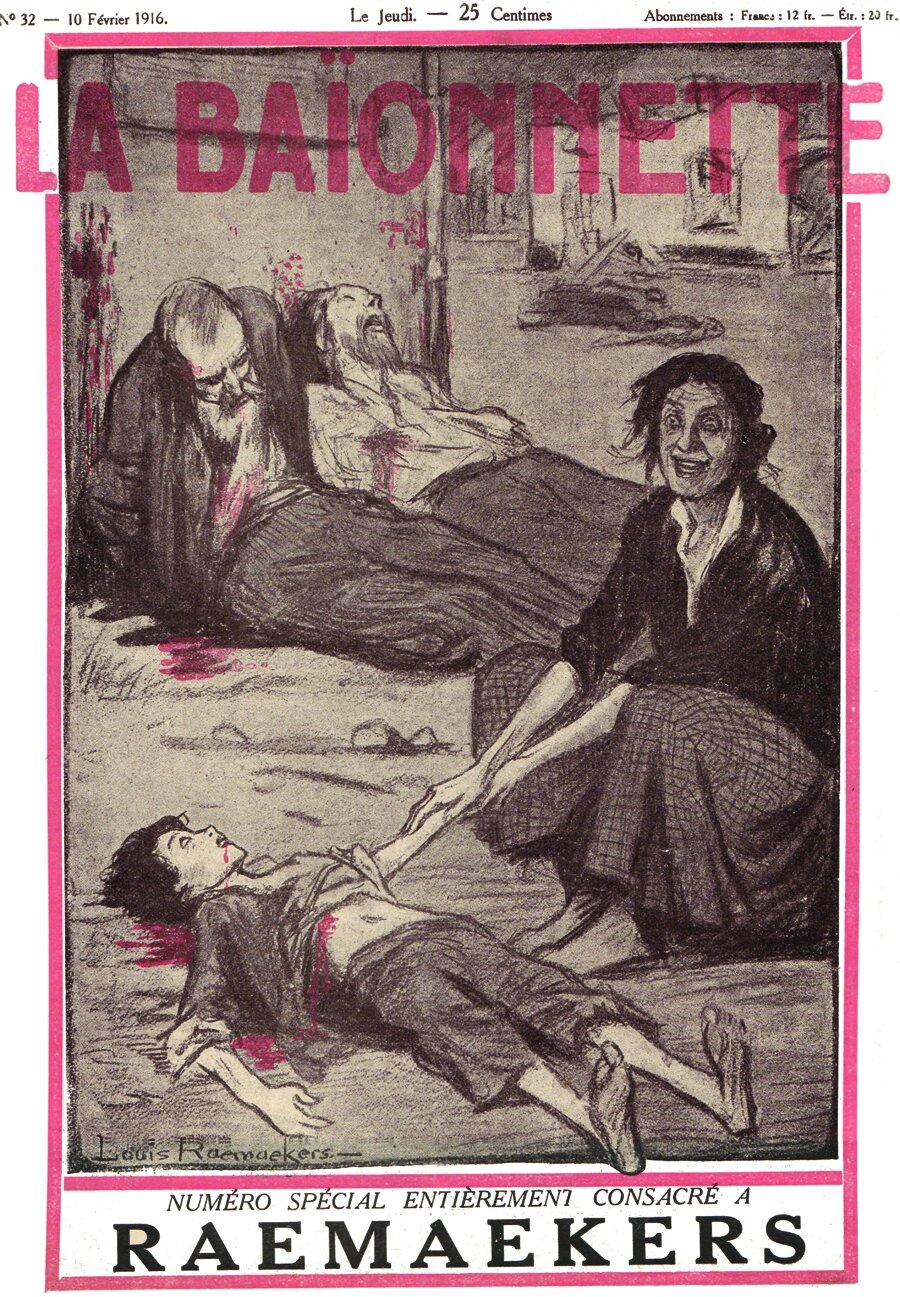Skirmisher Releases La Baionnette No. 32: Raemaekers (The Bayonet No. 32: Raemaekers)

Skirmisher Publishing is proud to announce the release of La Baoinnette No. 32: Raemaekers, the fourth title in the company's centennial commemoration of the Great War! This issue is dedicated to the work of Dutch satirical artist Louis Raemaekers, widely regarded as the most influential commentator on the Great War. It is available from online venues that include DriveThruRPG, RPGNow, and WargameVault (16 pages; 35 stock art images; $4.99). We hope you will enjoy it and say positive things about it on any sites to which you contribute!
Skirmisher Publishing is proud to announce the release of La Baoinnette No. 32: Raemaekers, the fourth title in the company's centennial commemoration of the Great War! This issue is dedicated to the work of Dutch satirical artist Louis Raemaekers, widely regarded as the most influential commentator on the Great War. It is available from online venues that include DriveThruRPG, RPGNow, and WargameVault (16 pages; 35 stock art images; $4.99). We hope you will enjoy it and say positive things about it on any sites to which you contribute!
This download includes a complete PDF copy of La Baoinnette No. 32: Raemaekers, a French magazine published during World War I, and high-resolution TIFF format images of all 35 illustrations that appear in the publication (31 black-and-white images at 600 dpi and four spot color images at 300 dpi). These high-quality images can be freely used in publishing projects of all sorts and are especially suited for those tying in with the Great War, the late 19th and early 20th centuries, and the classic era of the Cthulhu Mythos. Subjects depicted in this issue include soldiers, battlefields, victims of war, allegorical images of death and the countries involved in World War I, caricatures of national leaders, and more.
La Baionnette is a French satirical weekly that was published by cartoonist Henry Maigrot from 1915 to 1920. It was intended to boost French morale and took its name from its editor's practice of using it like a bayonet charge to ridicule Germany, caricaturize leaders like Kaiser Wilhelm II and Crown Prince Wilhelm of Prussia, and make incisive social commentary. Its pages were graced by work from some of France's greatest artists, including ones who were famous before the war or went on to achieve it during the interwar period.